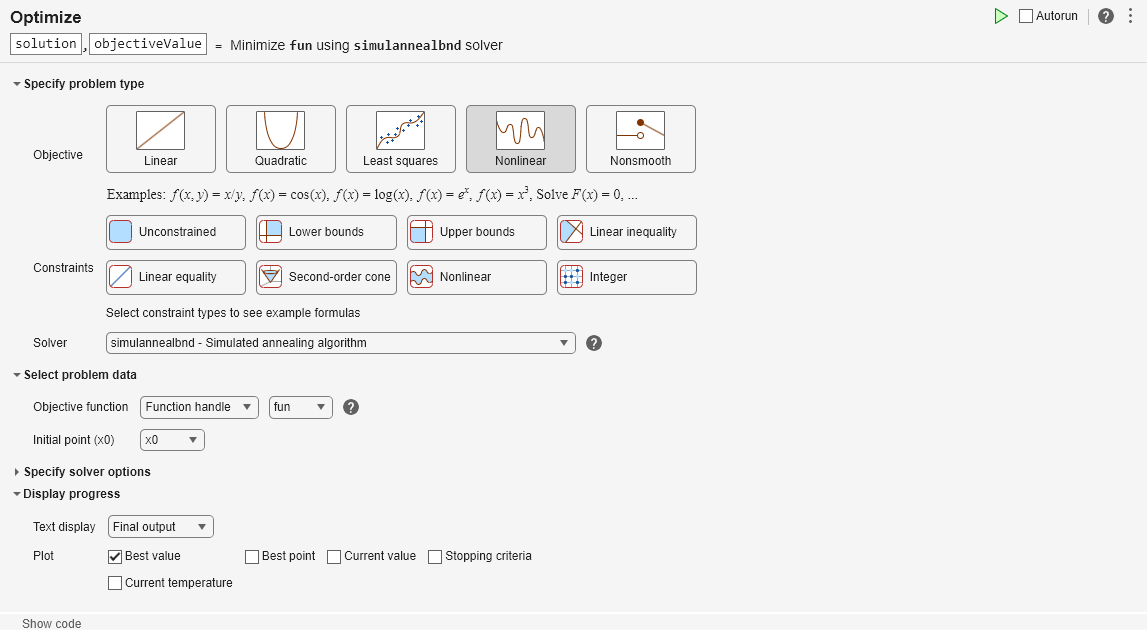最小化具有许多局部最小值的函数
此示例说明如何使用模拟退火找到函数的局部最小值。该示例介绍了两种最小化方法:在命令行上工作和使用优化实时编辑器任务。
De Jong 第五函数是一个二维函数,具有许多(25)局部极小值。运行此示例时该函数可用。在下图中,不清楚哪一个局部极小值是全局最小值。
dejong5fcn
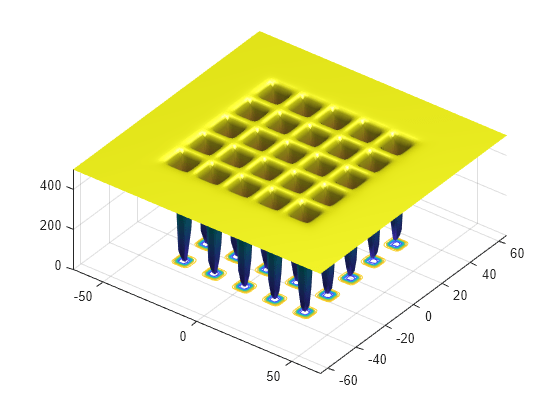
许多标准优化算法陷入了局部极小值。由于模拟退火算法进行广泛的随机搜索,陷入局部最小值的机会减少了。
注意:由于模拟退火使用随机数生成器,因此每次运行该算法时都会得到不同的结果。有关详细信息,请参阅重现结果。
在命令行中最小化
要运行无约束的模拟退火算法,请在命令行中使用 simulannealbnd 中的目标函数调用 dejong5fcn.m,并在以下代码中由匿名函数 @dejong5fcn 引用。
rng(10,'twister') % for reproducibility fun = @dejong5fcn; [x,fval] = simulannealbnd(fun,[0 0])
simulannealbnd stopped because the change in best function value is less than options.FunctionTolerance.
x = 1×2
-16.1292 -15.8214
fval = 6.9034
在结果中:
x 是算法返回的最终点。
fval 是终点处的目标函数值。
尽量减少使用 Optimize 实时编辑器任务
您还可以使用 优化 实时编辑器任务运行最小化,它提供了一种可视化方法。
点击主页选项卡上文件部分中的新建实时脚本按钮,创建一个新的实时脚本。

插入
Optimize实时编辑器任务。点击插入选项卡,然后在代码部分中选择任务 > 优化。
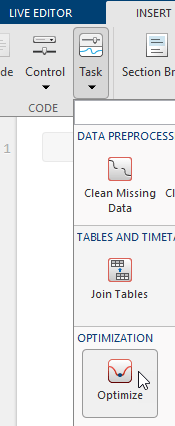

点击基于求解器的任务。
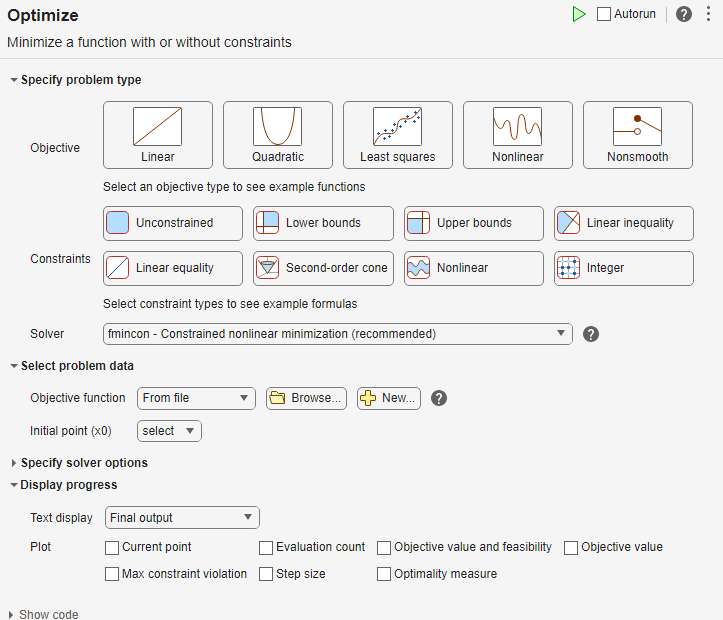
为了输入问题数据,请点击插入选项卡上的分节符按钮插入新节。新节出现在任务的上方和下方。
在任务上方的新部分中,输入以下代码来定义初始点和目标函数。
x0 = [0 0]; fun = @dejong5fcn; rng default % For reproducibility
要将这些变量放入工作区,请按 Ctrl+Enter 运行该部分。
在任务的指定问题类型部分,点击目标 > 非线性按钮。
选择求解器 > simulannealbnd - 模拟退火算法。
在任务的选择问题数据部分中,选择目标函数> 函数句柄,然后选择
fun。选择初始点 (x0) > x0。
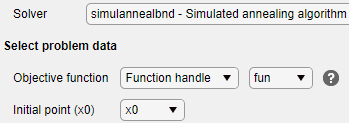
在任务的显示进度部分,选择最佳值图。
要运行求解器,请点击任务窗口右上角的选项按钮 ⁝,并选择运行节。绘图出现在单独的图窗窗口中和任务输出区域中。请注意,您的图可能与所示的图不同,因为
simulannealbnd是一种随机算法。

要查看解和最佳目标函数值,请查看任务的顶部。
![]()
Optimize实时编辑器任务将名为solution和objectiveValue的变量返回到工作区。要查看这些变量的值,请在任务下方的部分输入以下代码。
disp(solution) disp(objectiveValue)
按 Ctrl+Enter 运行该节。
此示例的结尾处有 Optimize 任务处于其最终状态。

simulannealbnd stopped because the change in best function value is less than options.FunctionTolerance.
Optimize 实时编辑器任务和命令行都允许您制定和解决问题,并且它们给出相同的结果。命令行更加精简,但对于选择求解器、设置问题以及选择绘图函数等选项提供的帮助较少。您还可以使用 Optimize 开始一个问题,然后生成用于命令行的代码,如 使用优化实时编辑器任务或求解器的有约束非线性问题。
